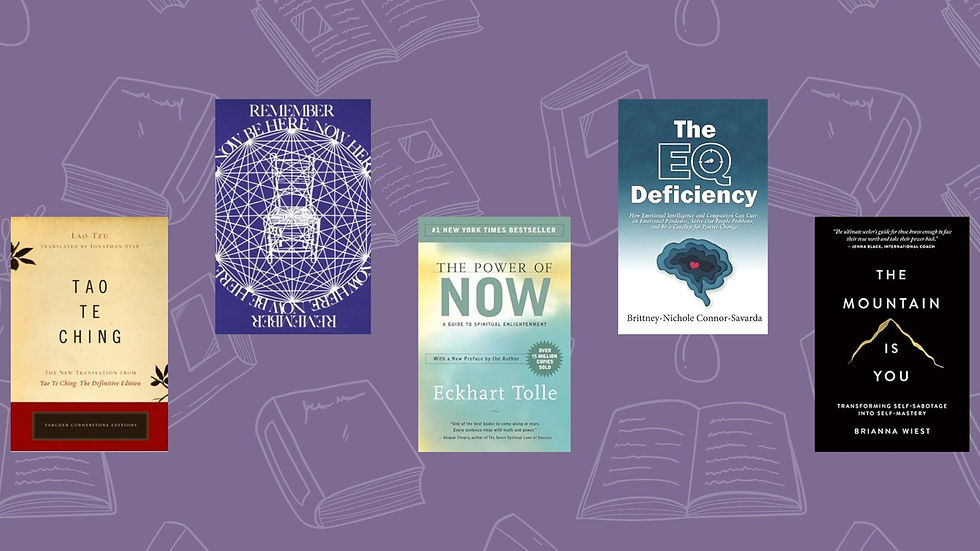Intuitive Guide to Self-Care
- Shifra Nerenberg

- Sep 1, 2022
- 4 min read
Updated: Sep 10, 2022

Good self-care means:
Be kind to yourself:
Despite what mass media likes to indicate, self-care is not simply chocolates and bubble baths.
While you can purchase many self-care tools (including chocolates and bubble baths), none of them will help you take good care of yourself if you're continually being unkind to yourself.
You can begin your self-compassion journey by identifying unhealthy thoughts that put you down rather than lift you up, and replace them with more positive messages that leave you feeling worthy and uplifted.
When you catch yourself having an unhealthy thought, take a deep breath, and consciously redirect that thought to be something inspiring or validating and something you are confident in saying (even if only to yourself). With enough repetition, old thought patterns get replaced by healthier ones.
For example, if a message from childhood was "I'm not good enough," you might replace that thought with "I am good enough."
Make sure your basic needs are met:
In any discussion about self-care, it's important to ensure your basic needs are met, i.e., food, shelter, necessary clothing, and safety—these are essential for survival. Before addressing anything else on this list, having your basic needs met is vital.
Set and maintain healthy boundaries:
Boundaries are essential to self-care. However, they become another misrepresented buzzword in self-care discussions if not adequately understood.
Yes, boundaries are about keeping some people out and keeping you safe inside. Boundaries are also about deciding beforehand what you want or don’t want, what you are willing to accept or share, and with whom.
Boundaries encompass a lot and apply to every aspect of life, from family and friend relationships to professional conduct. Give yourself permission to experiment and play with what boundaries feel best to you and can be most easily maintained for effective self-care. Examples of boundaries:
Before attending a social gathering, decide what you will share about your life and with whom.
Establish what you are and are not willing to tolerate with any new relationship partner(s), and revisit that conversation as needed as your connection deepens.
Set and maintain a schedule for when you will and will not reply to emails, texts, and other messages—especially for work.
Schedule/make time for you to find a quiet space without interruptions.
Say no when asked to do something you don’t want or need to do—i.e., respond with “I’m not available” or “no, that won’t work for me”.
Ask for help in specific (not general) terms.
Establish parameters for yourself around what you’re comfortable sharing online, especially on social media, and stick to those without feeling pressured to share everything about yourself.
Be a ‘broken record’ in repeating your response when continually asked about something you already said was off-limits—i.e. “I’m not ready to discuss that,” “please stop bringing that up,” and/or “I don’t want to talk about that.”
Value rest and creativity:
Making time and space for rest and creativity is essential to our well-being. It allows our mind, body, and spirit to recharge, reset, and reintegrate.
For some people, rest and creativity are two separate pieces of self-care, while for others, they go hand-in-hand. Either way, both are important.
Examples of rest:
Take a nap of any length.
Walk in nature, i.e., forest bathing or walking in your yard barefoot.
Sit comfortably and focus on breathing deeply for 5-15 minutes.
Sit or lay under a tree.
Read for entertainment/pleasure.
Sleep in or choose a day where you don’t set an alarm and can stay in bed past your normal wake-up time.
Swim, float, or dangle your feet in water.
Play with your animal companion—i.e., use interactive toys with your cat or play tug-of-war with your dog.
Take an afternoon/morning/day off, with nothing scheduled or planned, during which you won’t do any work or regular tasks.
Watch a fun show/movie or listen to a cool podcast that is preferably not something that is work/school related.
Play a game.
If you’re unsure where to start, try mindfulness practices or deep breathing, which can help you establish a sense of well-being and naturally soothes your body’s nervous system.
By nature, we are all creative. However, if you find it challenging to get into a creative mode, try something that you can enjoy and have fun doing, without allowing yourself to become attached to the outcome.
Examples of creative expression:
Color in a coloring book or doodle on a blank page.
Have an impromptu dance party in your living space.
Make visual art or crafts of some kind.
Write in a journal, create a free-form poem, or jot down your thoughts in a stream of consciousness—i.e., do a brain dump.
Cook or bake.
Rearrange/reorganize an area or part of your home.
Record yourself talking about something that matters to you
Play an instrument or sing along to the music.
Work on a DIY project that won’t matter if it’s not exactly right.
Make up a new game to play or modify an existing game’s rules.
Creativity is good self-care because it allows space for your brain to process in the background while you enjoy the act of being creative.
Remember that great self-care results in you feeling good about and being kind to yourself – so do what feels restful and creative to you, even if you’re the only one who finds it helpful. What matters is what works for you!
About the author:
Shifra Nerenberg is an experienced Intuitive Advisor who resides in the Appalachian mountains of NC. She focuses on providing the highest level of intuitive skills & arts to the communities she serves - both local & global. Shifra helps others navigate their best path forward & connect with their inner wisdom.



Comments